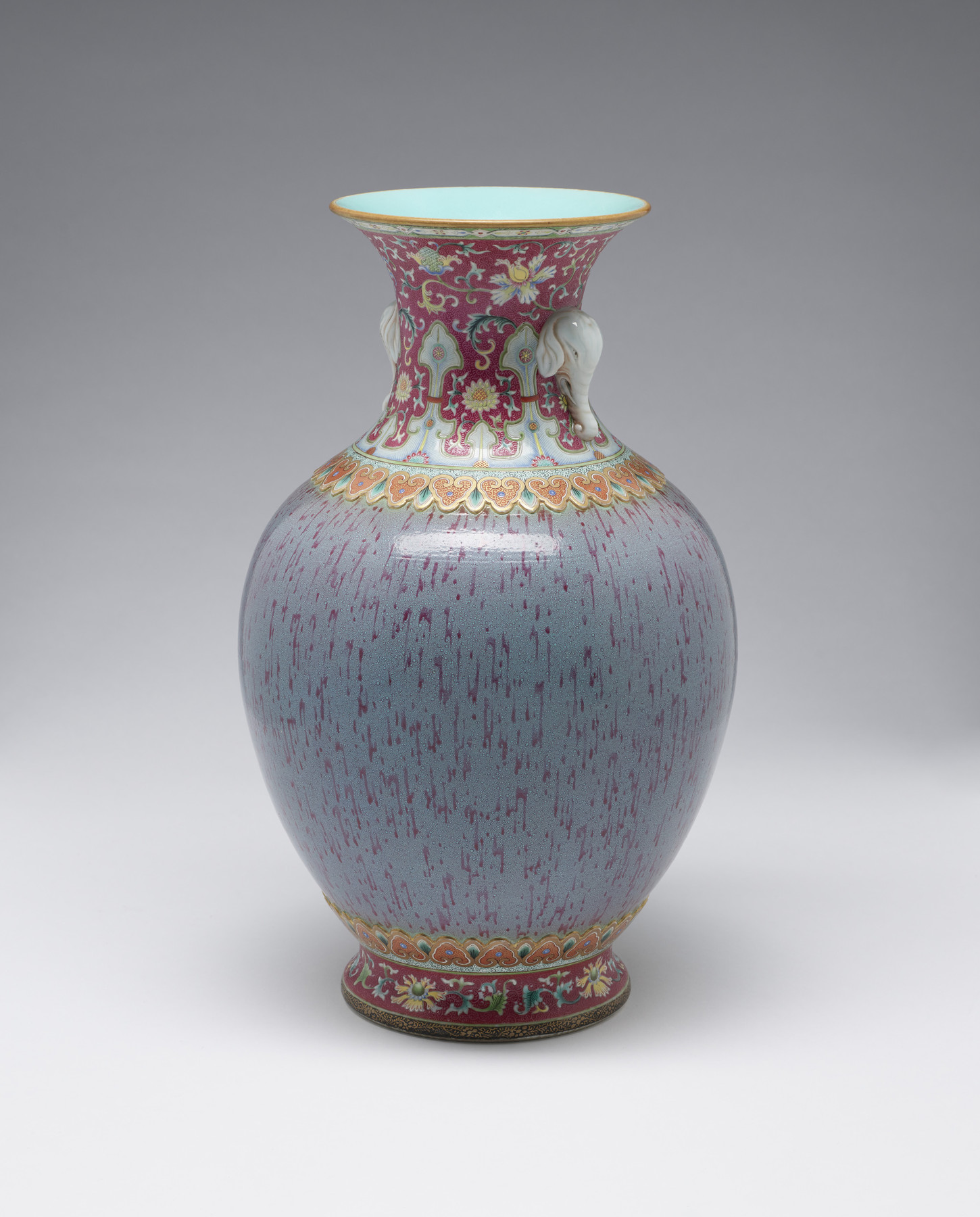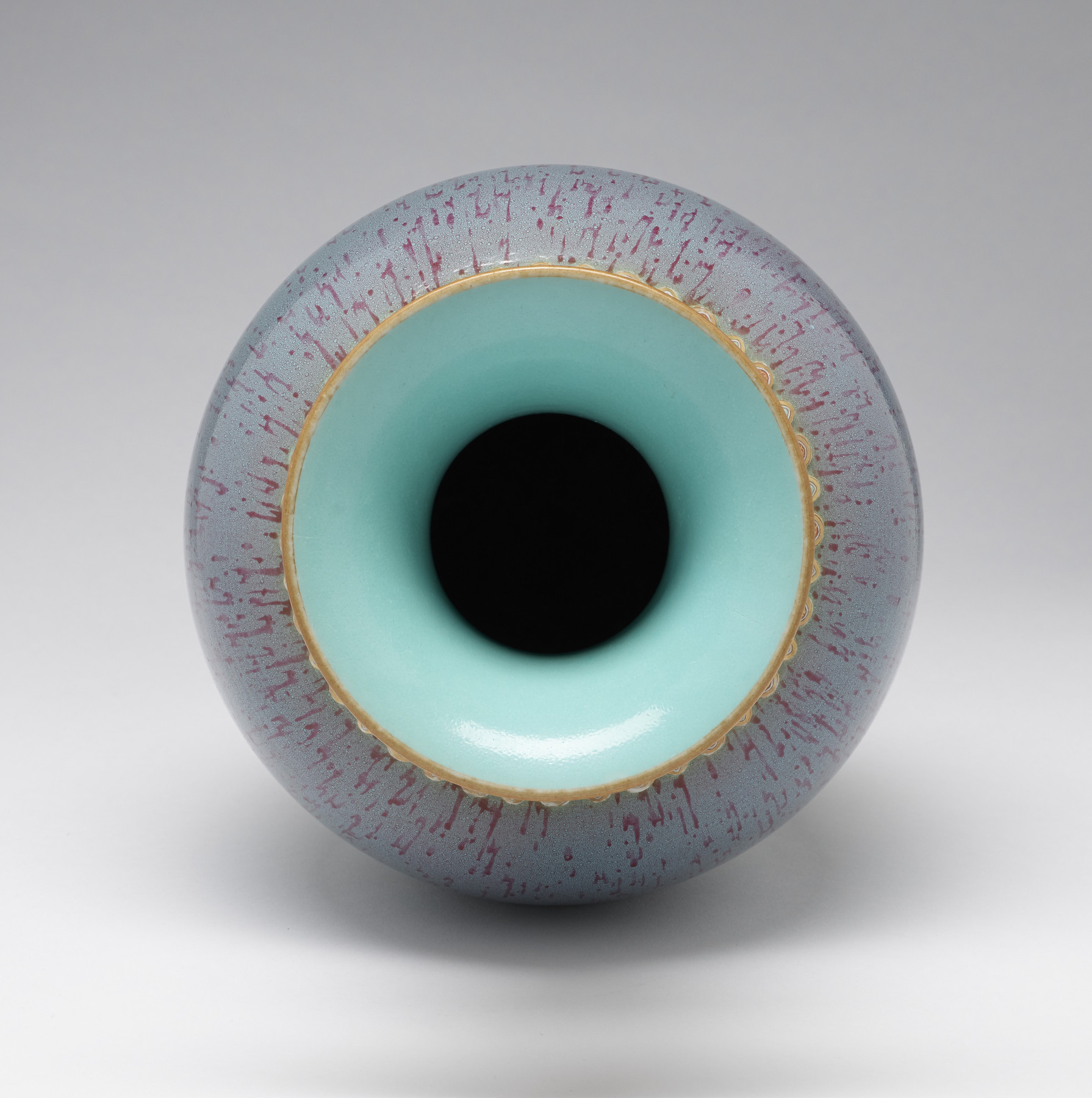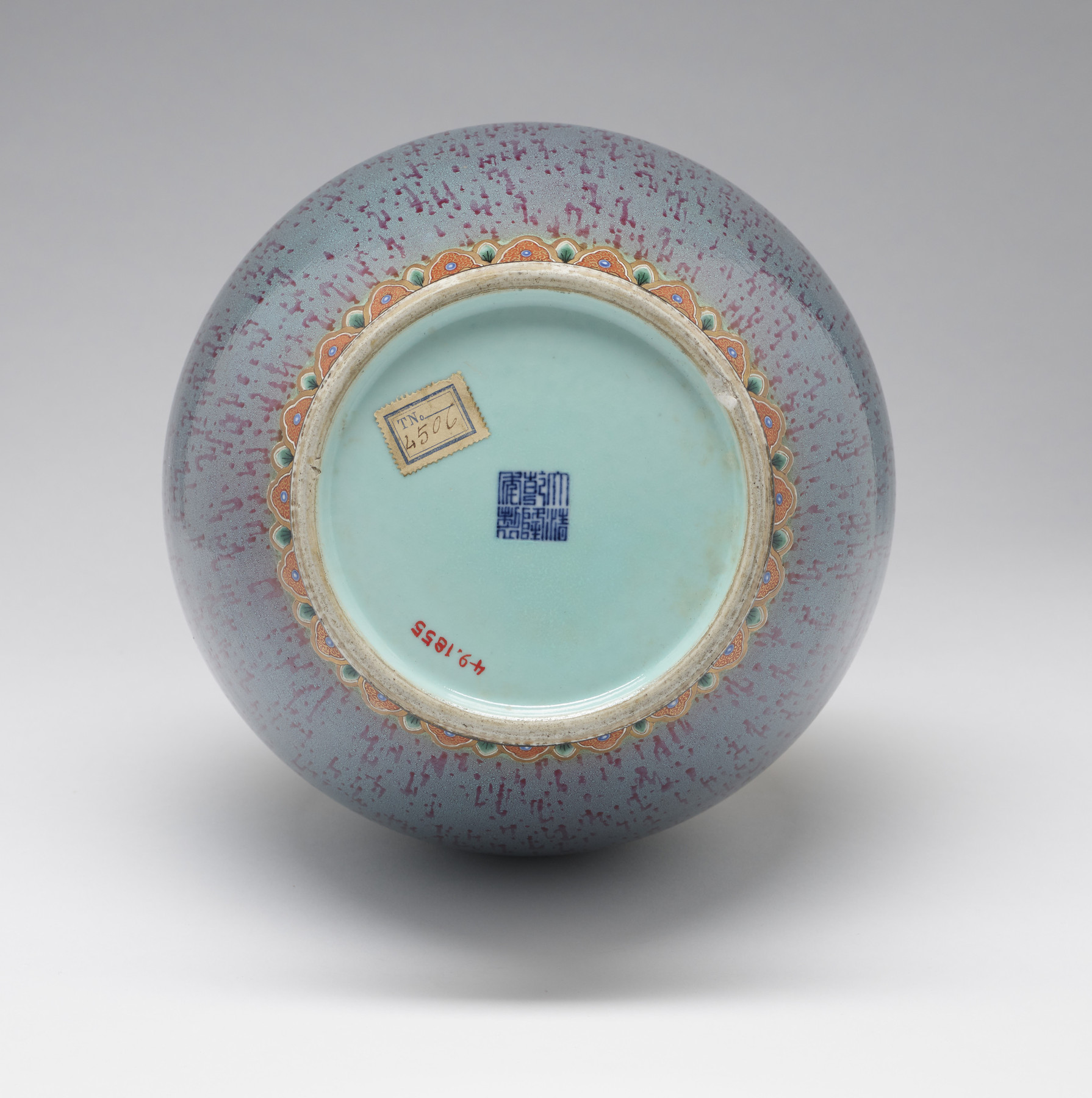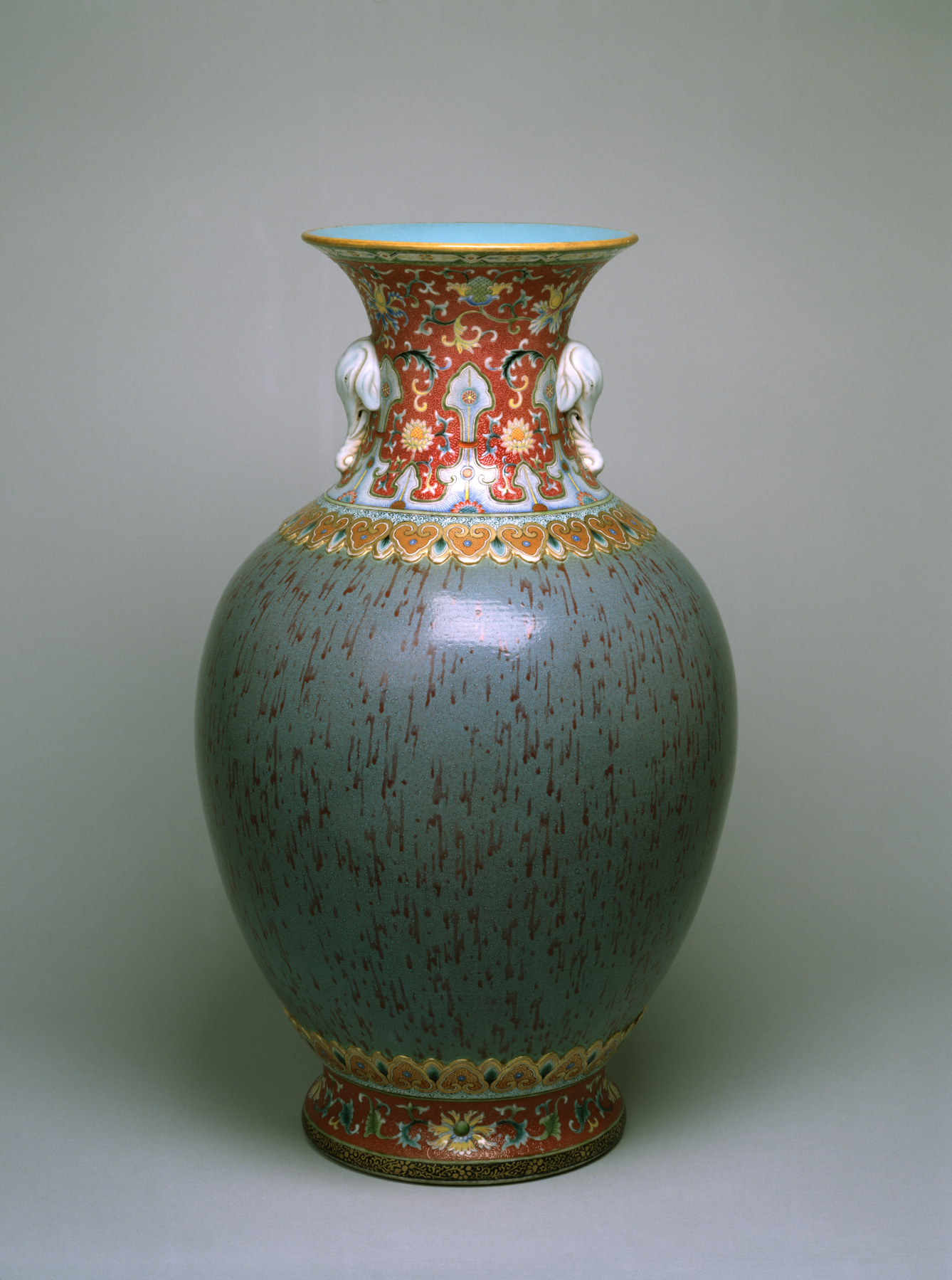Vase with Lu Jun Glaze
(China )
The glazing technique covering the main body of this vase is called lu jun in Chinese (known as “robin’s egg” in English), and it was based on the jun copper oxide wares that developed during the earlier Song dynasty (960–1279). The red glazed rings, freckles, and streaks that appear on this vase emerged as an unpredictable result during kiln firing. No two vessels bear the same overglaze pattern.
Inscription
Provenance
Provenance (from the French provenir, 'to come from/forth') is the chronology of the ownership, custody, or location of a historical object. Learn more about provenance at the Walters.
William T. / Henry Walters Collection, Baltimore, prior to 1896 [mode of acquisition unknown]; Walters Art Museum, 1931, by bequest.
Exhibitions
| 2019-2021 | Excursions through the Collection: Portraiture, Adornment, and the Natural World. |
| 2025 | Imperial Chinese Treasures from the Walters Collection. 1991-0. |
Geographies
China (Place of Origin)
Measurements
H: 15 3/16 × Diam: 9 7/16 in. (38.5 × 24 cm)
Credit Line
Acquired by William T. or Henry Walters, before 1896
Accession Number
In libraries, galleries, museums, and archives, an accession number is a unique identifier assigned to each object in the collection.
In libraries, galleries, museums, and archives, an accession number is a unique identifier assigned to each object in the collection.
49.1855












